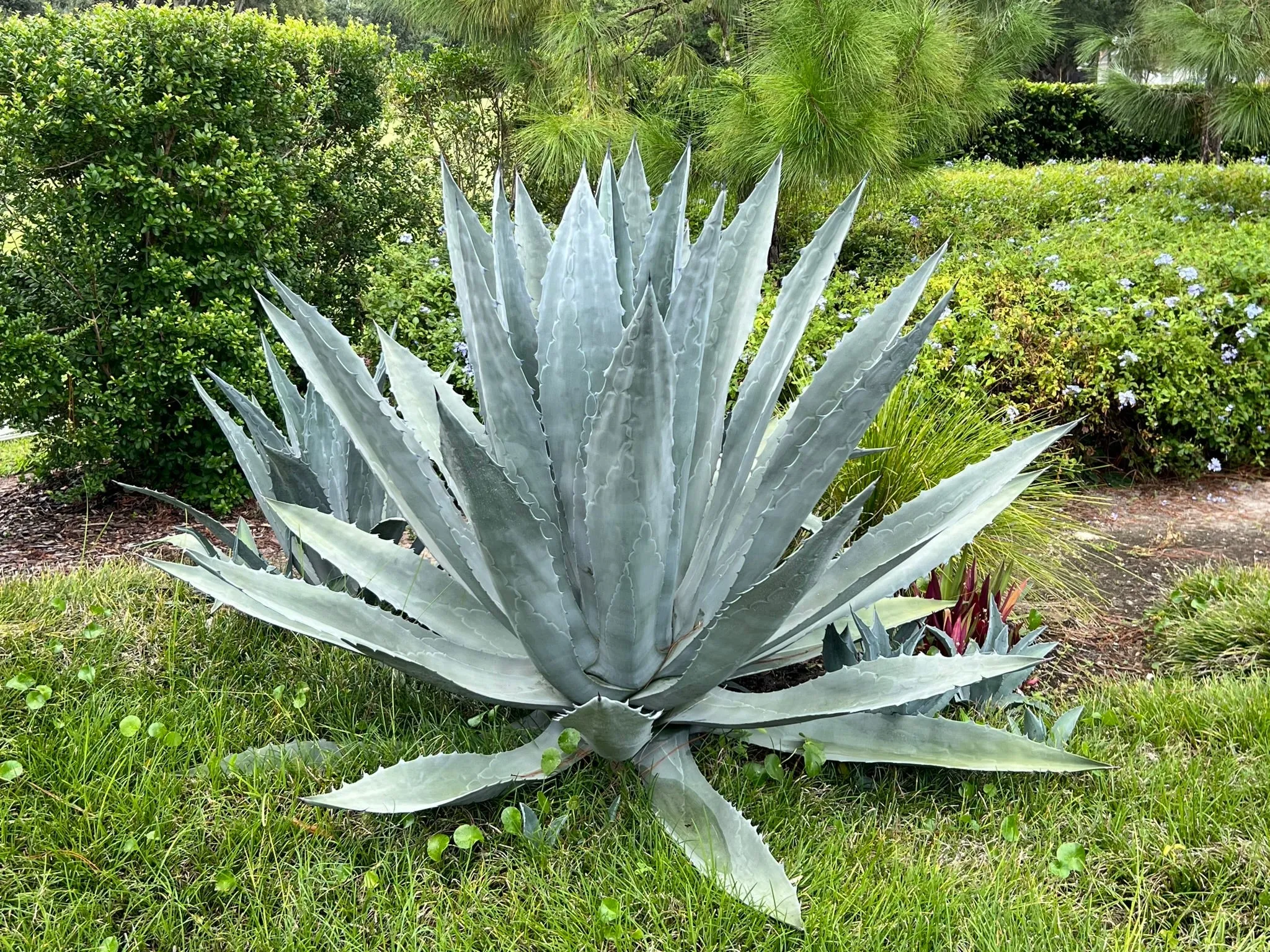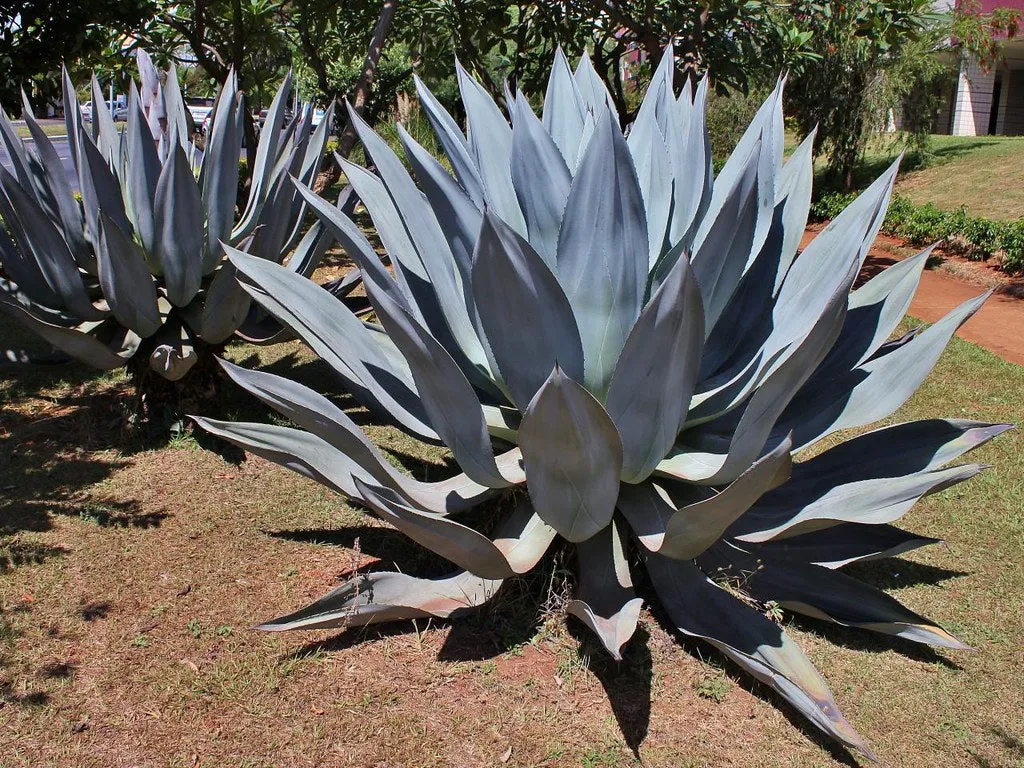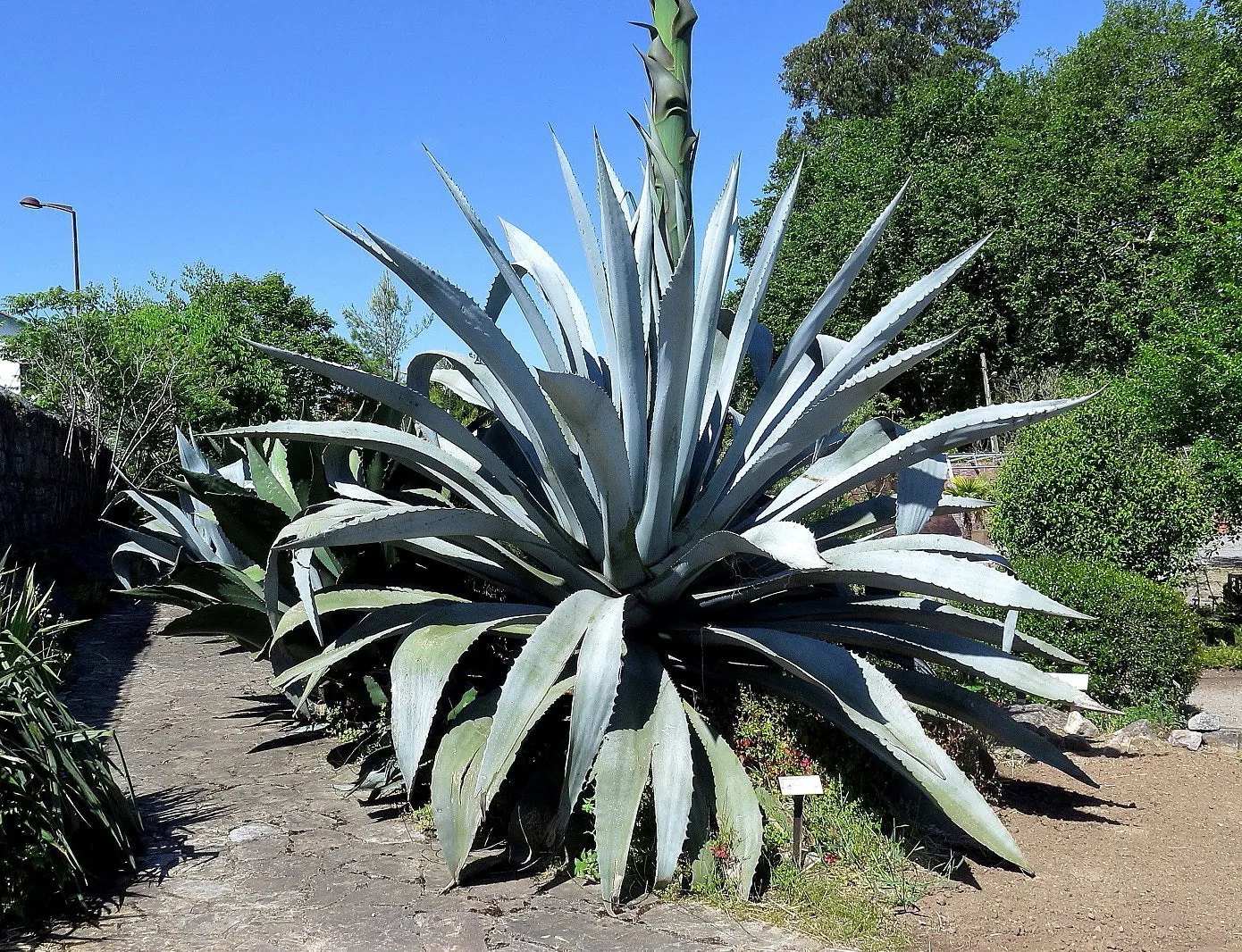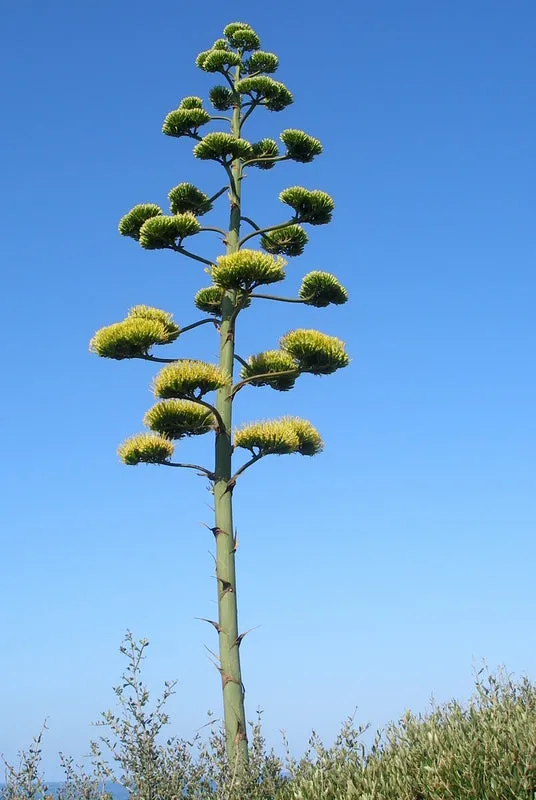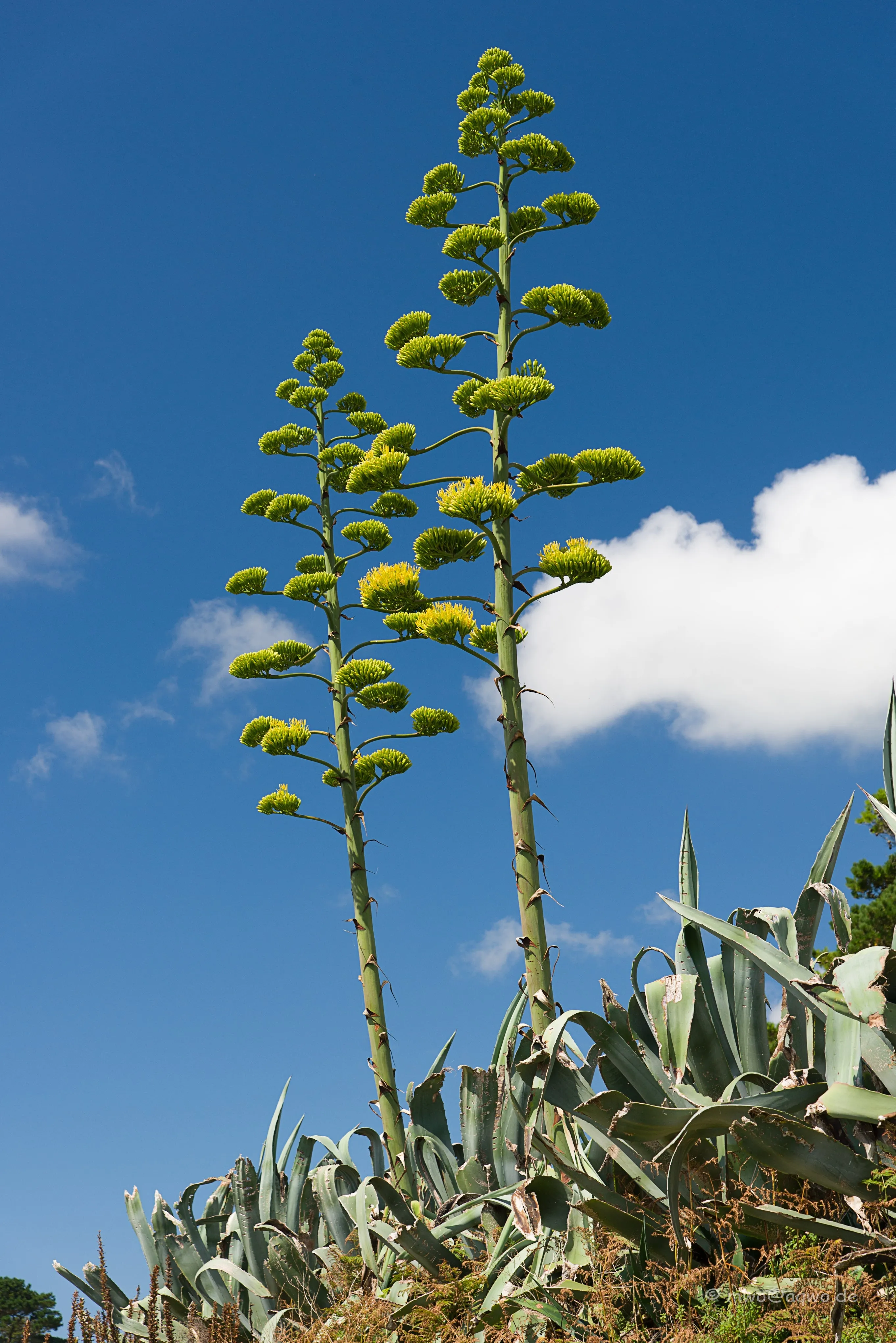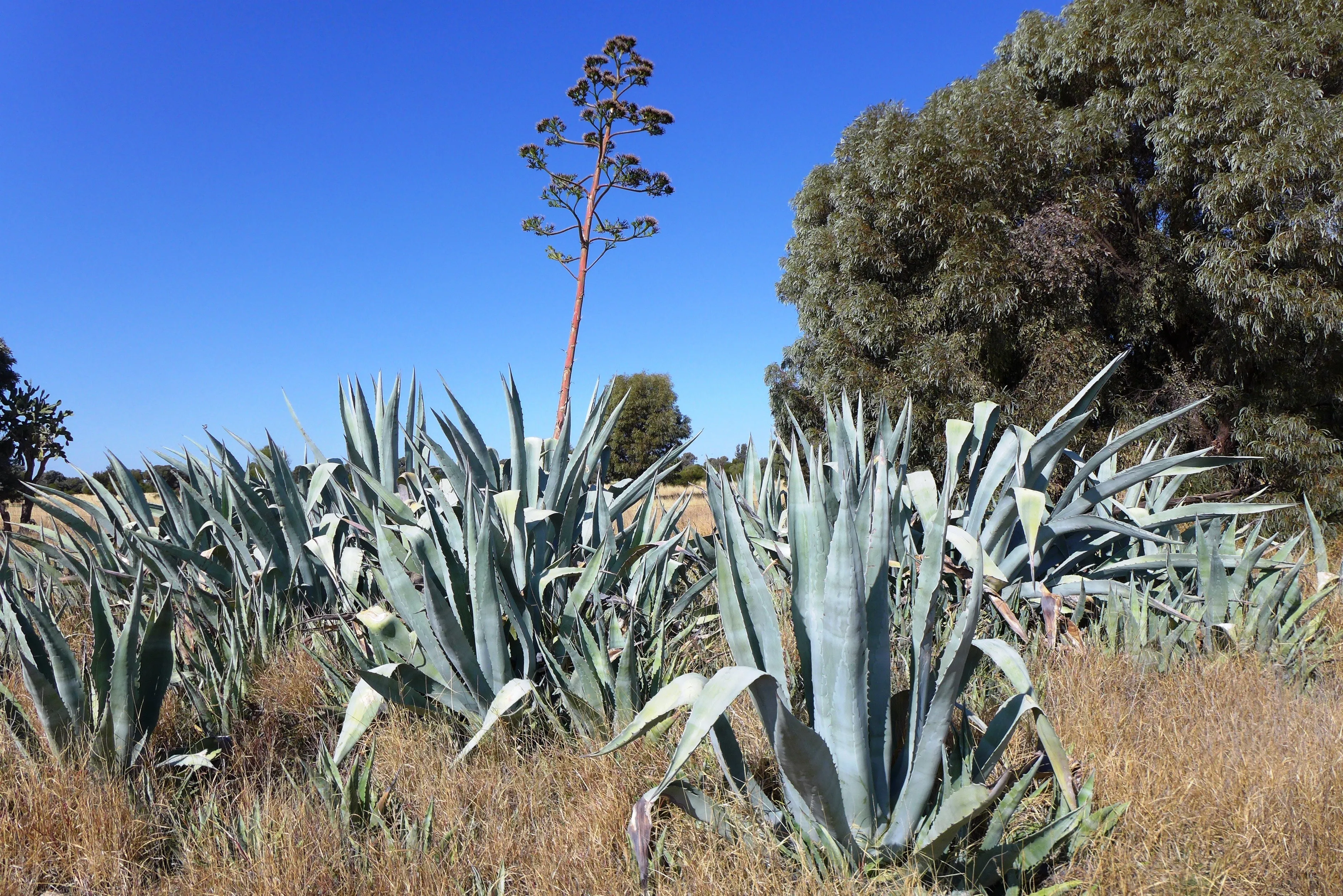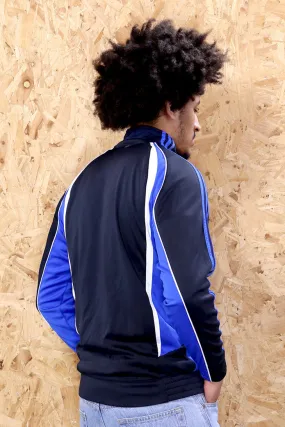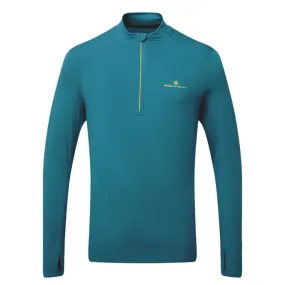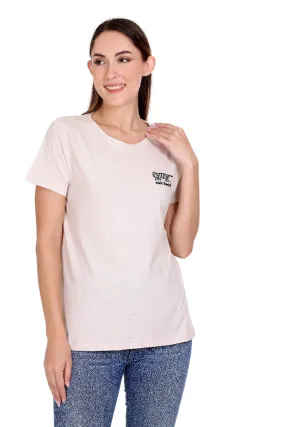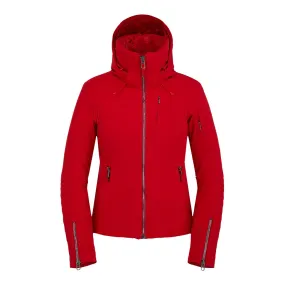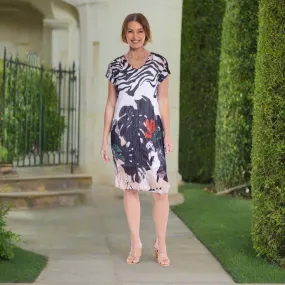Agave americana is a rosette-forming perennial succulent that is native to Mexico. Each plant typically forms a large, evergreen basal rosette of thick, succulent, lanceolate, gray-green leaves. Each rosette typically matures over time to as much as 6' tall by 8-10' wide. Each leaf has a waxy bloom, spiny tip, and sharp marginal spines. This plant is also well-known for its infrequent but spectacular flowering spikes. Plants are monocarpic (bloom only once and then die). Common name of century plant suggests the plant will live 100 years before flowering. In reality, outdoor plants typically bloom between the 10th and 25th years. Indoor plants rarely flower. When an outdoor plant blooms, it sends up a single, stout, erect flowering stalk from the center of the basal rosette of leaves to 15-30' tall or more. The flowering stalk resembles a narrow telephone pole with horizontal branching near the top. Greenish-yellow flowers (each to 3-4" long) bloom in panicles at the branch ends. Suckers/offsets root at the base of each rosette over time, often forming a colony of new plants. Once a plant flowers and dies, the offsets around the base of the plant continue to grow.
Best growth occurs in a sandy/gritty, dry to medium moisture, well-drained soil in full sun. Container plants may be grown in a gritty, cactus-type potting mix. Good soil drainage is important. Poorly-drained soils may lead to root rot. Tolerates dry soils and drought. Garden Uses. Where winter hardy, this agave serves as an interesting tropical accent or specimen. It is a large and showy plant for the landscape. It needs a large space in which to grow. Plants are often grown in cactus or succulent garden areas. It will grow well in containers as an indoor plant at a much smaller size. Hardy in zones 8-12.
Growing Instructions
- The seeds like moist, well-drained soil. Prepare a mixture of half potting soil and half sand, perlite or vermiculite. Put the soil in a pot. Water the mixture so that it is moist but not wet.
- Put the seeds on the soil.
- Cover the seeds with a thin layer of soil.
- Water the seeds.
- Place the pots in an area with warm temperatures in full sun or part shade. The seeds should germinate in two to three weeks, but they may germinate erratically over a longer period of time.
- When the seedlings are a few inches tall, they can be transplanted.




